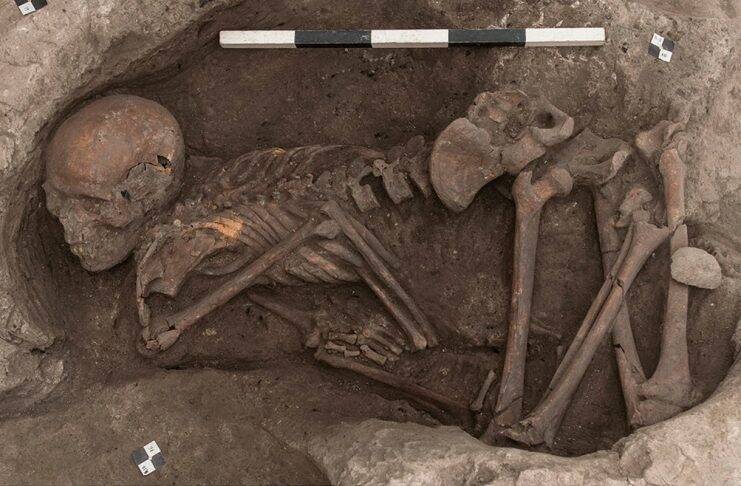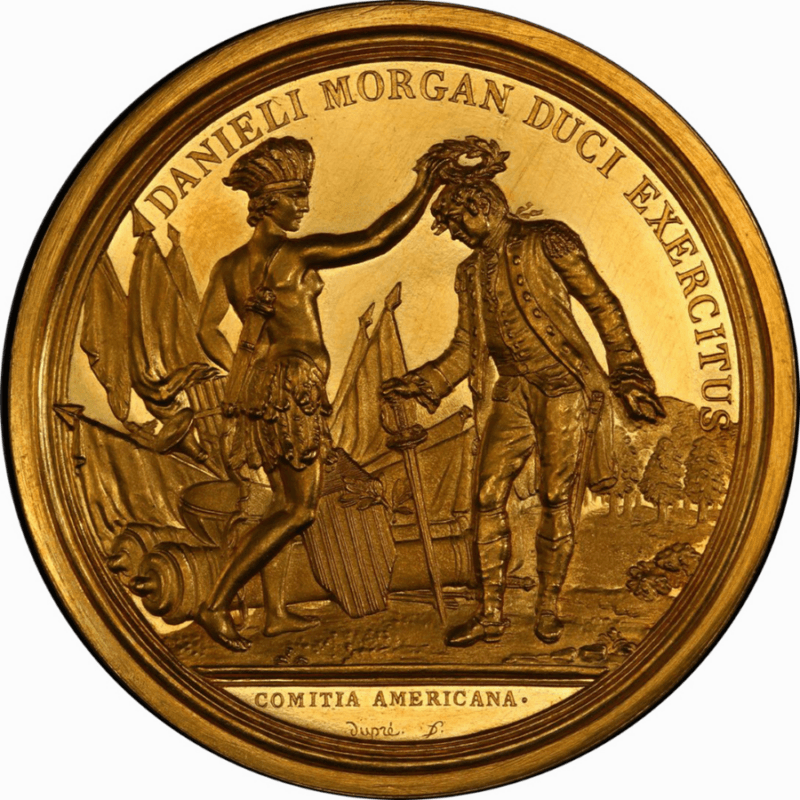Mysteries behind painted skeletons at "the oldest city in the world" unlocked, evidence of giant prehistoric camels discovered, rare Revolutionary War medal brought to auction.
Researchers Uncover The Bizarre Burial Rituals Of Çatalhöyük, “The Oldest City In The World”

University of BernArchaeologists are now puzzled about why only some of the skeletons were painted and why there seems to be no pattern along age or gender lines as to who was painted and who wasn’t.
No one knows why, after prospering in present-day Turkey for 1,400 years, the city of Çatalhöyük was quickly abandoned in 5700 B.C.E. Some experts believe that this once-egalitarian community descended into widespread violence as agriculture developed and social stratification set in. And archaeologists may have just uncovered some of the grim funerary rituals used to bury both the victims of that violence as well as countless others who perished at Çatalhöyük over the course of more than a millennium.
New analysis of skeletons at “the oldest city in the world’ shows that not only did the people of Çatalhöyük paint the bodies of the newly dead, they would often bury them within the walls or under the floors of their own homes — then paint the walls just as they’d painted the body. Moreover, they would also pass the bones of the dead around the community before burying them right in their family’s own living room.
Learn more about the ancient burial practices of Çatalhöyük here.
Giant Camel Bones In Mongolia Indicate That Early Humans Hunted Them 27,000 Years Ago

PixabayC. knoblochi was a shaggy, two-humped camel that was twice the size of its modern relatives.
New research by archaeologists in Mongolia, Russia, and the United States is revealing previously unknown information about the ancient giant camels that once roamed the Central Asian grasslands.
A new study looks at Camelus knoblochi, a species of giant camel that scientists now believe coexisted with early humans and other wild camels that still live in Asia today.
Dig deeper in this report.
This Incredibly Rare Revolutionary War Medal Thought To Be Lost Forever Just Turned Up At An Auction

Stack’s Bowers GalleriesThe Daniel Morgan medal features the Revolutionary War general and a Native American woman on one side.
John Kraljevich has made a career out of authenticating coins and medals. So when an auction house approached him with a gold medal encased in a red leather United States Mint case, he knew it was something special. But he didn’t know how special until he opened the box.
“My reaction was somewhere along the lines of, holy (expletive),” Kraljevich said. “As soon as I laid my eyes on it, I knew what it was.”
The medal in his hands was the Daniel Morgan at Cowpens medal, a medal originally minted for Revolutionary War hero General Daniel Morgan. After disappearing from view in 1885, it is now set to be auctioned, where it could pull in half a million dollars.
Read on here.





